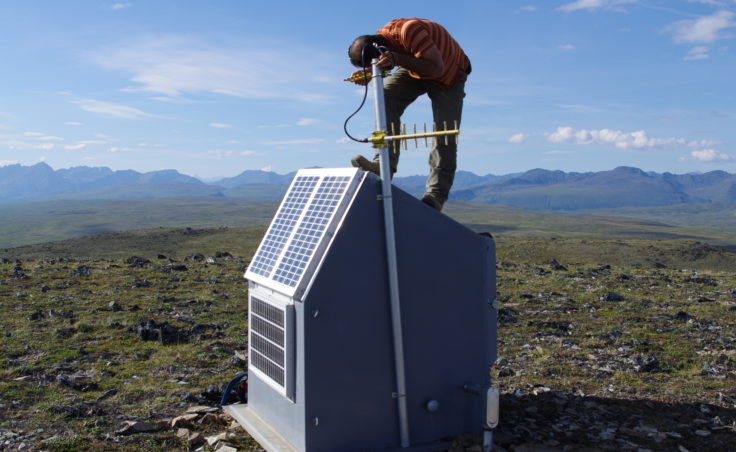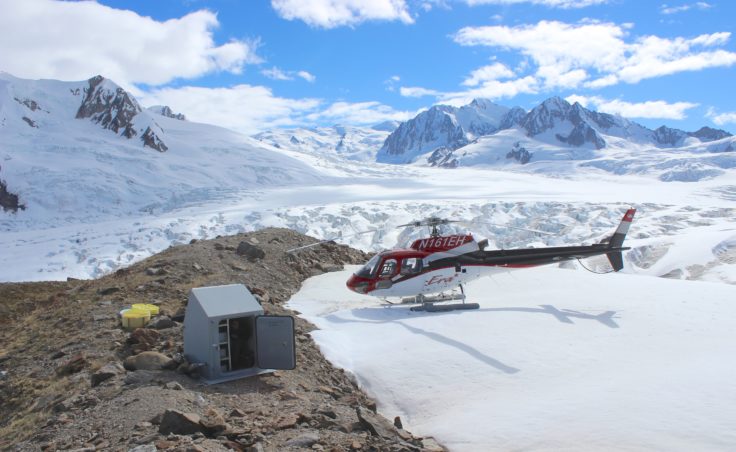
Alaska seismologists say continuing budget cuts are affecting their ability to quickly detect and pinpoint earthquakes.
Helena Buurman of the Alaska Earthquake Center testified on Saturday before the House Finance Committee’s subcommittee on the University of Alaska’s budget.
Buurman said they have a fundamental government responsibility to protect lives and property. But she said four years of state budget cuts have affected their ability to maintain their seismic monitoring network.
“In August of last year, we suspended most field maintenance of the state’s monitoring network,” Burrman said. “As a result, more than a quarter of our monitoring stations are offline as of today. With the seismic network deteriorating rapidly, an earthquake occurring right now will take longer to detect, longer to assess, and we will do a poorer job.”
Waiting on update on status on Lynn building in downtown #Whitehorse which was damaged in yesterday’s earthquake pic.twitter.com/IY8OB7pxaK
— Philippe Morin (@YukonPhilippe) May 2, 2017
Buurman testified just two days before a pair of magnitude 6 earthquakes on Monday morning woke up Southeast Alaska residents and caused minor damage in Whitehorse. She explained to lawmakers how their information is important for drafting building codes, setting insurance rates, mapping tsunami evacuation zones, and for engineers as they design every piece of infrastructure or construction project in the state.
In a phone interview later, Buurman explained how they have 150 seismic monitoring stations located in mostly remote areas around the state. The more stations that are placed around a fault line, the better the speed and accuracy in determining an earthquake’s location and magnitude.
“There is a seismometer which we dig into the ground and is buried below ground,” Buurman said. “And then we usually have some sort of hut or structure that holds all the rest of the equipment, and that includes a large bank of batteries to keep the power running. There are solar panels on the side of the hut to keep the batteries charged, and radio communications equipment to transmit the data 24/7.”
Buurman said about 40 of the 150 stations are currently offline.
Some of the common malfunctions include wildlife getting into the huts and chewing on the cables and equipment. Snow can cover the solar panels, which can prevent station batteries from recharging. Part of the communications network can also break down and prevent data from being passed on from a group of nearby operating stations.
Some of the bigger outages include the southern end of Kodiak Island and north of Yakutat.
Buurman wrote to North Pole Rep. Tammie Wilson that it took 30 minutes to update state emergency officials after Monday’s earthquakes. She writes that the national standard is 10 minutes.

State seismologist Michael West said the Alaska Earthquake Center gets almost a third of its $2.5 million funding from the state, a third from the federal government and a third from private corporations for specific projects like monitoring a hydroelectric dam or the trans-Alaska Pipeline.
West said state dollars actually serve as seed funding that leverage federal dollars, which have also been declining. He said only $588,000 may be appropriated by state lawmakers this year, down from $800,000 before 2014.
Both the House and Senate have passed their own versions of the state operating budget, but the Senate has delayed negotiations over resolving differences in the bill.
West is hopeful that Alaska’s Congressional delegation will be able to appropriate additional federal funds.
Matt Miller is a reporter at KTOO in Juneau.




